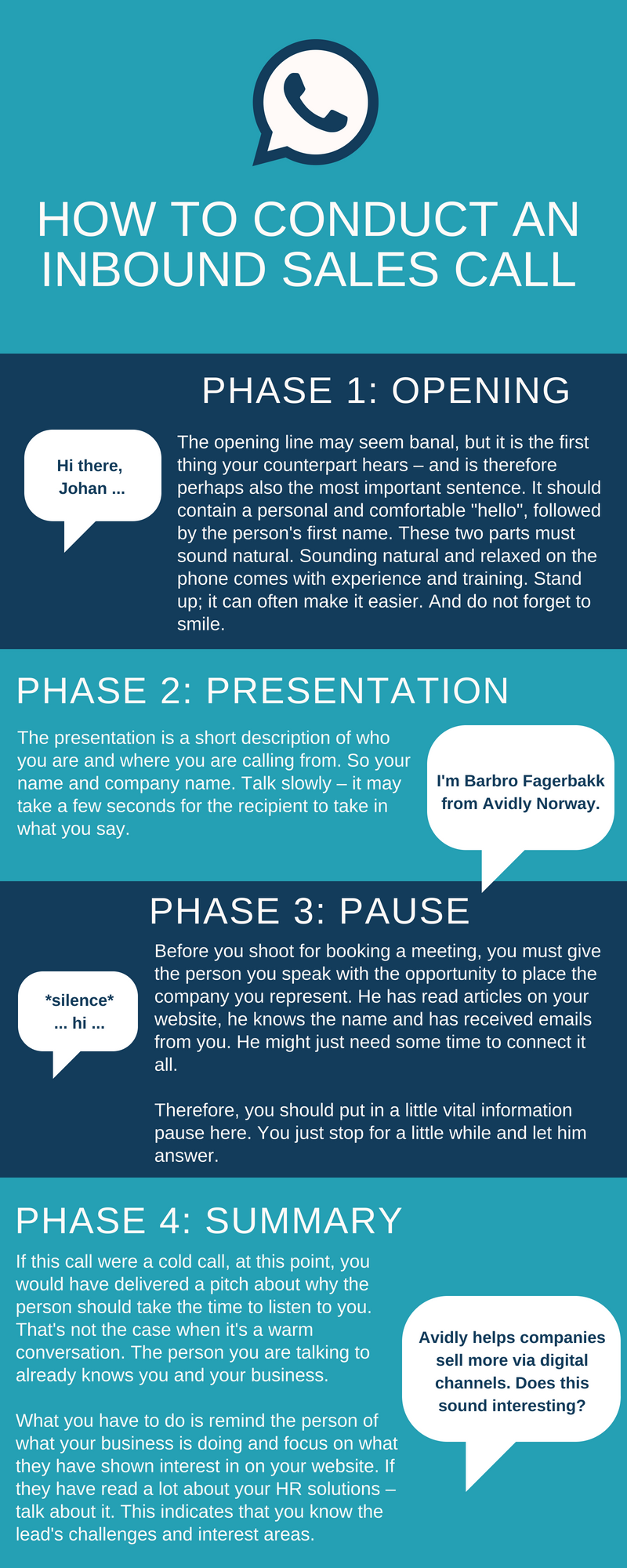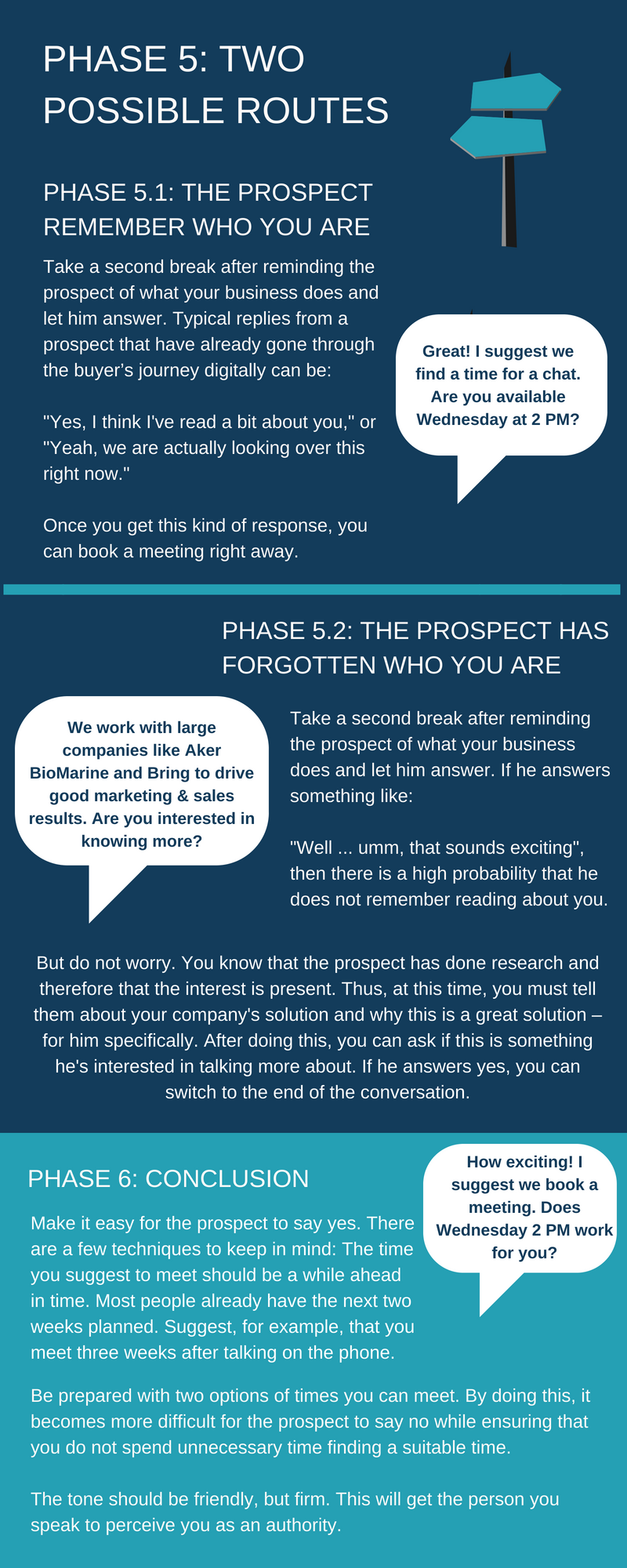A marketing and sales strategy that gives higher ROI, a lower customer acquisition cost (CAC) and a...
Inbound sales are about listening to the prospect and using the information you have about this person to offer the best solution for each lead. But how should you proceed in a sales call to close the deal – regardless of whether the lead loves your company or if he has forgotten who you and your company are?
Whether you are not entirely up to date on modern sales, or if you need help to better communicate with your prospects, here is a brief recipe for how to proceed with an inbound sales call – both with hot and cold leads.
How to conduct an inbound sales call


Want to read everything in text format instead? Here is the text version:
Phase 1: Opening
The opening line may seem banal, but it is the first thing your counterpart hears – and is therefore perhaps also the most important sentence. It should contain a personal and comfortable "hello", followed by the person's first name. These two parts must sound natural. Sounding natural and relaxed on the phone comes with experience and training. Stand up; it can often make it easier. And do not forget to smile.
Phase 2: Presentation
The presentation is a short description of who you are and where you are calling from. So your name and company name. Talk slowly – it may take a few seconds for the recipient to take in what you say.
Phase 3: The Vital Information Pause
Before you shoot for booking a meeting, you must give the person you speak with the opportunity to place the company you represent. He has read articles on your website, he knows the name and has received emails from you. He might just need some time to connect it all.
Therefore, you should put in a little vital information pause here. You just stop for a little while and let him answer.
Phase 4: Summary
If this call were a cold call, at this point, you would have delivered a pitch about why the person should take the time to listen to you.
That's not the case when it's a warm conversation. The person you are talking to already knows you and your business.
What you have to do is remind the person of what your business is doing and focus on what they have shown interest in on your website. If they have read a lot about your HR solutions – talk about it. This indicates that you know the lead's challenges and interest areas.
Phase 5: 2 possible ways to go
Phase 5.1: The prospect knows you and confirms that this is correct
Take a second break after reminding the prospect of what your business does and let him answer.
Typical replies from a prospect that have already gone through the buyer’s journey digitally can be:
"Yes, I think I've read a bit about you."
"It’s so great that you called. We are actually sitting and looking over this now."
Once you get this kind of response, you can book a meeting right away.
Phase 5.2: The prospect has forgotten who you are
Take a second break after reminding the prospect of what your business does and let him answer.
If he answers something like:
"Well ... umm, that sounds exciting", then there is a high probability that he does not remember reading about you.
But do not worry. You know that the prospect has done research and therefore that the interest is present. Thus, at this time, you must tell them about your company's solution and why this is a great solution – for him specifically.
Here, it may be worth mentioning some of the customers you work with and the results you have achieved. After doing this, you can ask if this is something he's interested in talking more about. If he answers yes, you can switch to the end of the conversation.
Phase 6: Conclusion
Make it easy for the prospect to say yes. There are a few techniques to keep in mind:
The time you suggest to meet should be a while ahead in time. Most people already have the next two weeks planned. Suggest, for example, that you meet three weeks after talking on the phone.
Be prepared with two options of times you can meet. By doing this, it becomes more difficult for the prospect to say no while ensuring that you do not spend unnecessary time finding a suitable time.
The tone should be friendly, but firm. This will get the person you speak to perceive you as an authority. Additionally, by having accurate and concrete suggestions, you make it easy for the prospect to say yes to a meeting.

![[TEST]: How well does inbound marketing fit your company?](https://no-cache.hubspot.com/cta/default/308131/5dc8cd11-970b-4f27-a429-290b28a64aa5.png)


